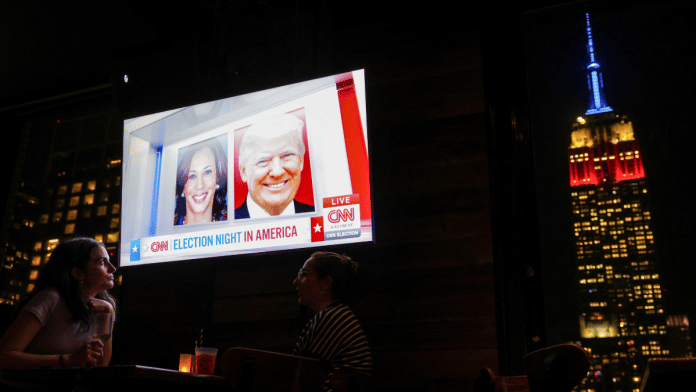Thank you dear subscribers, we are overwhelmed with your response.
Your Turn is a unique section from ThePrint featuring points of view from its subscribers. If you are a subscriber, have a point of view, please send it to us. If not, do subscribe here: https://theprint.in/subscribe/
If there’s one thing I’ve come to believe about American politics, it’s that their democracy needs a serious shakeup. For decades now, Americans have been locked into a two-party system that’s turned politics into an ugly exercise in choosing the lesser of two evils, one that’s left Americans stuck between two forces that often feel more similar than different when it comes to the issues that actually shape people’s daily lives.
Defense budgets, corporate tax breaks, Wall Street handshakes—it’s not a coincidence that neither party ever seems to stray too far off the script when it comes to these topics.
Every year, America spends close to $850 billion on defense, a figure that dwarfs the next nine largest military budgets combined, including those of China and Russia. The two major parties rarely question the baseline assumption that such astronomical spending is necessary, even though there’s little debate over where the funds go or how they contribute to actual security. A third party could disrupt this dynamic by asking: Why is so much spent, where is it all going, and how can it be justified when other pressing needs go underfunded?
Perhaps most importantly, a third party could act as a watchdog on behalf of Americans, forcing Democrats and Republicans alike to answer tough questions they’d rather avoid. Why is it that both parties support tax policies that overwhelmingly benefit corporations, even as wealth inequality reaches historic levels? Right now, the top 1% of Americans control about 34% of the country’s wealth. Or, why does immigration reform remain in limbo when there’s broad consensus on certain aspects of it? A strong third-party presence would compel the political establishment to engage with these issues directly, rather than brushing them under the rug.
In the past, significant shifts in American politics have often been driven by third-party movements, which forced mainstream parties to adapt. The rise of the Progressive Party in the early 20th century championed ideas like women’s suffrage, labor rights, and anti monopoly measures that later became mainstream.
Besides, the case for a third party isn’t just a matter of broadening the ballot for the sake of novelty. The fact is, under the Federal Election Campaign Act, if a third-party candidate garners 5% of the national vote in a presidential election, their party becomes eligible for federal funding in the next cycle—a slice of taxpayer money going toward a perspective that isn’t in lockstep with either the Democrats or Republicans. In the 2020 election, this kind of public funding could have amounted to tens of millions of dollars, opening doors for a party to build infrastructure, establish a ground game, and seriously challenge the two-party grip on power. It’s not just dollars and cents; it’s an opportunity to actually break free from the echo chamber that’s dominated Washington for far too long.
If that 5% threshold is reached, Americans will also see automatic ballot access for a third party in most states, which is no small feat. Right now, it’s practically a Herculean effort for any alternative party just to get their name on the ballot in all 50 states. Endless petition drives, legal obstacles, and outright obstructions stand in their way—obstacles conveniently absent for the two major parties, who have worked together, consciously or not, to maintain this duopoly.
One only has to look at the data to see that the hunger for something different is real and growing. Polls consistently show that a majority of Americans—around 60%, according to Gallup—believe a third major party is needed. This isn’t just the fringe talking; it’s a major chunk of the electorate.
Many of these are independents, yes, but there are also Democrats and Republicans among them, quietly sceptical of their own parties, increasingly dissatisfied with being shoehorned into ideologies that don’t fully capture their beliefs or priorities. People are exhausted by the endless volley between blue and red, the sense that every election is a forced choice, one that can only shift the nation incrementally to the left or the right but never fundamentally change its course.
Ultimately, if Americans are serious about wanting a government that reflects the diversity of “American life,” a third party could be the key to breaking the two-party stranglehold. The world isn’t black-and-white, so why should politics be?
So yes, I believe a third party could be the antidote to this worn-out system. A relief for Americans who are tired of feeling forced into a corner, who want more than just the latest version of “us versus them.” It’s not an instant fix; it’s not a cure-all. But maybe, just maybe, it could break the cycle enough to let fresh ideas and real choices into our politics. And that, I’d argue, is an experiment worth trying.
These pieces are being published as they have been received – they have not been edited/fact-checked by ThePrint


